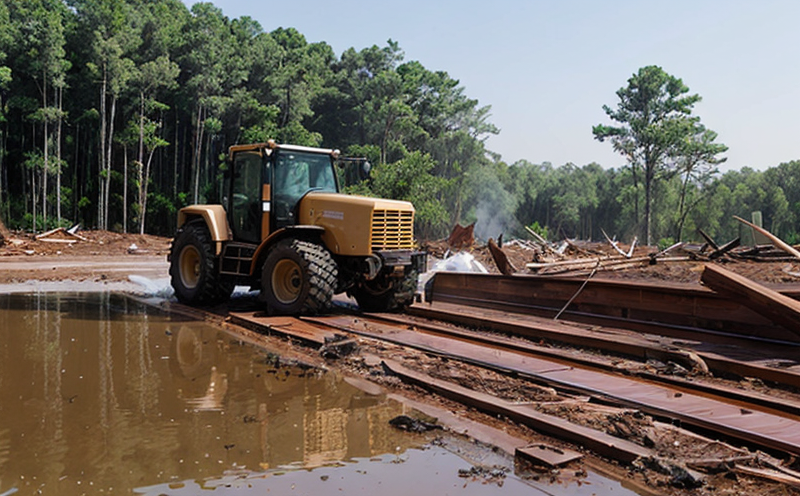EN 60068 2 60 Gas Corrosion Environmental Testing for Lighting Materials
The European Standard EN 60068-2-60:2015 defines the test method to determine the resistance of materials to gas corrosion. This standard is particularly critical for lighting materials, as they are often exposed to a variety of environmental conditions that can lead to degradation over time.
The primary goal of this testing procedure is to ensure that lighting products remain functional and safe under conditions such as exposure to corrosive gases like hydrogen chloride (HCl), sulfur dioxide (SO₂), or other similar compounds. The test simulates the effects of these gases at different temperatures, ensuring product reliability in real-world environments.
The testing process involves exposing specimens to specific concentrations and types of gas for a set duration. This allows manufacturers to evaluate how materials perform under accelerated aging conditions that mimic long-term exposure to corrosive atmospheres. The results provide valuable insights into the durability and longevity of lighting products, helping ensure compliance with relevant regulations.
For R&D engineers and quality managers, this testing is essential for optimizing product design and ensuring consistent performance across different environmental conditions. By adhering to standards like EN 60068-2-60, manufacturers can enhance the reliability of their products, reduce warranty claims, and improve overall customer satisfaction.
The test procedure typically involves several steps:
- Preparation of specimens according to specified dimensions and materials.
- Exposure to a controlled environment with specific gas concentrations for predetermined durations.
- Observation and measurement of changes in the specimen's properties, such as color change or loss of mass.
- Evaluation against acceptance criteria outlined in EN 60068-2-60.
Understanding the standard’s requirements is crucial for ensuring that lighting products meet regulatory standards and perform reliably over their intended lifespan. This testing not only protects end-users but also ensures compliance with international regulations, such as those set by the International Electrotechnical Commission (IEC).
In summary, EN 60068-2-60 provides a robust framework for assessing material resistance to gas corrosion in lighting applications. By following this standard, manufacturers can enhance product performance and extend their operational life, ultimately leading to better customer satisfaction and reduced environmental impact.
Benefits
- Enhanced Durability: Ensures that lighting materials can withstand harsh environmental conditions, extending product life.
- Regulatory Compliance: Helps manufacturers meet international standards and regulations for lighting products.
- Risk Reduction: Identifies potential issues early in the development process, minimizing warranty claims and recalls.
- Improved Quality: Provides a standardized method for evaluating product performance under specific environmental conditions.
- Innovation Support: Allows manufacturers to experiment with new materials and designs while ensuring they meet rigorous testing criteria.
International Acceptance and Recognition
EN 60068-2-60 is widely recognized and accepted by regulatory bodies around the world. Its global acceptance ensures that lighting products tested under this standard are universally compliant with international regulations.
The standard has been adopted in numerous countries, including the European Union, North America, and Asia-Pacific regions. By adhering to EN 60068-2-60, manufacturers can ensure their products meet regulatory requirements in multiple jurisdictions without additional testing or certification processes.
Regulatory authorities often recommend or mandate compliance with this standard for lighting materials exposed to corrosive environments. This ensures a consistent level of quality and reliability across different markets, enhancing consumer trust and safety.
In summary, the international acceptance of EN 60068-2-60 underscores its importance in ensuring product performance and compliance with global standards. By following this standard, manufacturers can confidently meet regulatory requirements and expand their market reach.
Environmental and Sustainability Contributions
The environmental impact of lighting products is significant, especially considering the widespread use of these devices in public spaces and commercial buildings. Ensuring that materials used in lighting fixtures are resistant to gas corrosion not only enhances product performance but also contributes positively to sustainability efforts.
By adhering to EN 60068-2-60, manufacturers can significantly reduce waste associated with premature failure of lighting products. This extends the operational life of lights, reducing the need for frequent replacements and minimizing electronic waste.
The standard also promotes the use of sustainable materials that are less prone to degradation under harsh environmental conditions. By selecting these materials during product development, manufacturers contribute to a more sustainable supply chain and reduce the overall carbon footprint associated with lighting production.
In addition, compliance with this standard helps in reducing energy consumption by ensuring lights remain operational for longer periods. This leads to lower maintenance costs and reduced resource usage over time, aligning closely with broader sustainability goals.
Overall, the environmental benefits of EN 60068-2-60 extend beyond individual products, contributing positively to global sustainability initiatives. By adhering to this standard, manufacturers play a crucial role in promoting eco-friendly practices within their industry and beyond.





